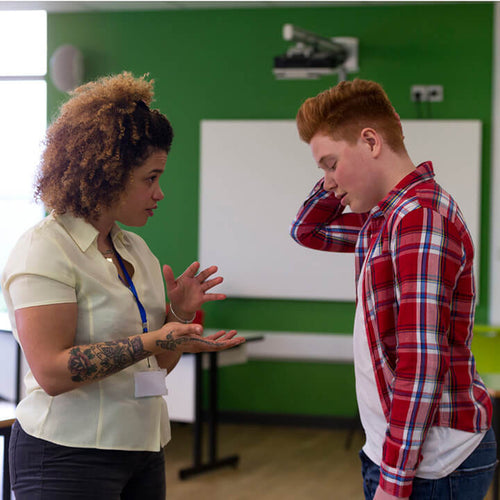The past two years have been tumultuous for everyone, including teachers who now face more disruptive and unmotivated students than usual. Even two decades ago, research suggested that many classroom educators spent as much as 60% of their classroom time addressing behavioral issues rather than teaching. Recent calls from educators and school administrators, suggest these issues are increasing dramatically.
Successful work with students involves creating a classroom culture based on positive relationships. This is, without a doubt, the Love and Logic way. The principles and techniques of Love and Logic are designed to build, or at least maintain, positive teacher-student relationships. In our experience, the only thing that works is a healthy, positive relationship based on mutual respect and understanding.
Love and Logic’s One-Sentence Intervention was developed to help teachers who are dedicated to building better relationships with their students, especially students who present behavioral challenges. This intervention is based upon research demonstrating that improved behavior in students can be linked to the quality of the connection between the student and the teacher.
This research also indicates that teacher-student relationships are developed most effectively when teachers display interest in aspects of students that are not traditionally school related. In other words, this relationship can blossom when the teacher notices their distinctive characteristics. This is the basis for the One-Sentence Intervention. Here are the basic steps for this technique:
- Identify the student’s strengths and interests.
- List six brief statements you can use to notice these strengths and interests. For example, “I noticed that you like to dance—I noticed that.”
- Approach the student, smile, and use the statement identified at least two times a week for at least three weeks.
- Listen to the student if he/she wants to talk about the strength or interest.
This technique should be used at times and places that will not cause embarrassment for the student, and it should not be used when the student is upset. Save it for calm times.
Sometimes this technique is confused with providing rewards contingent based on good performance, which remains the hallmark of many programs for managing student behavior. In fact, many schools require teachers to provide “good behavior bucks” or other kudos when they see students do anything positive. Although this might be effective with some students in some situations, it can backfire with students who have significant, deep-seated problems, such as academic apathy.
Teachers who try the One-Sentence Intervention are often astonished at the resulting improvement in their relationships with students.
More detailed information about this technique, as well as other Love and Logic techniques for teachers, can be found in our book, Teaching with Love and Logic: Taking Control of the Classroom.
Thanks for reading!
Jim and Dr. Charles Fay














